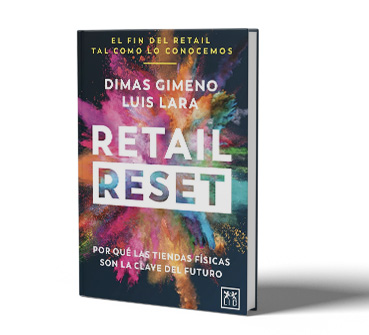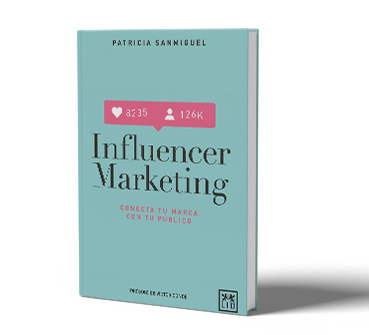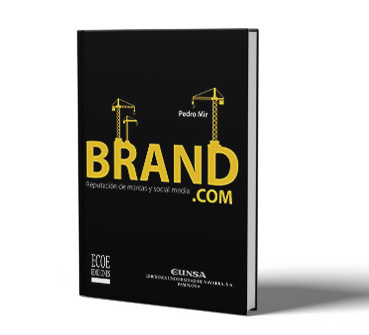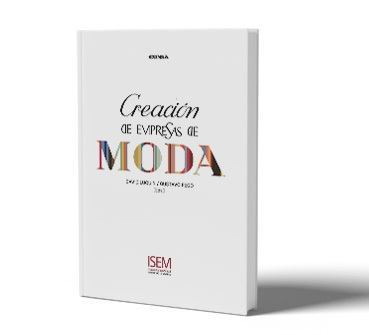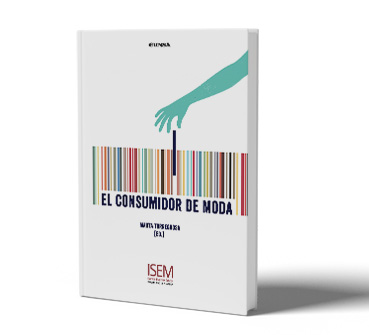Published case studies
BUSINESS ETHICS AND CORPORATE SOCIAL RESPONSIBILITY, LEADERSHIP AND MANAGEMENT OF PEOPLE
These parts of the "Matteo Manzani" case describe a career path in the fashion industry. Matteo works in different companies with different management styles: he moves from a very structured environment to a paternalistic management. The texts detail the decisions that Matteo has to face, both on a personal level and in the international development of one of the companies.
Authors: Arias Lara, Luis; Susaeta Erburu, Lourdes; Pin Arboledas, José Ramón (2016).
- Part number: DPO-385
Case written in collaboration with IESE.
STRATEGIC MANAGEMENT, FINANCE, ENTREPRENEURSHIP
The main driver of fashion e-commerce was private clubs (a business model initiated by France's vente-privee in France in 2001). On the one hand, it helped to remove brands' stock in a discreet way and allowed customers to buy fashion products at deep discounts that they could not find digitally in any other way, as many brands did not have e-commerce and, in some cases, not even a website. This circumstance helped this type of e-commerce business to grow at a dizzying pace in some countries for many years. However, this situation would not last forever and private clubs were aware that they had to grow through diversification and the establishment of a clear and concise brand.
Authors: Fernandez Garcia-Andrade, Pablo; Oliver Conti, Xavier (2015).
- Part number: M-1330
Case written in collaboration with IESE.
STRATEGY , LEADERSHIP AND PEOPLE MANAGEMENT
The case "It's in the Bag. Or Is It? Michael Kors' Quest to Stay at the Top" describes the meteoric rise of this fashion company and outlines the strategic options it might consider for the future. The year 2014 marked three years since Michael Kors Limited had completed a successful IPO. But John Idol (CEO) and Michael Kors (Chief Creative Officer) needed to take stock. There were indications that the handbag market might be becoming saturated. Also, there were concerns that the brand risked losing its appeal. International growth was critical to the future of the company and it remained to be seen whether its approach would work in Europe and Asia.
Authors: Arribas, V., Tozer, A., Baldo, A., and Ferraro, F. (2014).
- Part number: SM-1619-E
Case written in collaboration with IESE.
STRATEGY , LEADERSHIP AND PEOPLE MANAGEMENT
Abercrombie & Fitch (A&F) was founded in 1893 in the United States as a store selling camping and hiking gear and weapons. In 1988 it was acquired by The Limited, creator of successful American brands. In order to resurrect the brand and give it a new look, Mike Jeffries was put at the helm, who, over more than ten years, managed to revamp it into what it is today. Its obsession with beauty is its competitive advantage and the cornerstone of its strategy, which is reflected in its customers, employees, stores, products and so on. However, the company has been involved in several controversies and has been accused of discrimination.
Authors: Arribas, V., Garcia, I., Susaeta, L., and Pin Arboledas, J. R. (2014).
- Part No.: DPO-303
Case written in collaboration with IESE.
DECISION ANALYSIS , LEADERSHIP AND PEOPLE MANAGEMENT , MARKETING
This case deals with the dilemma of a "perfect saleswoman" and her rise in the organization. It shows how the protagonist, Rita Rodier, has many skills for sales but few for team management. On the other hand, her proximity to the company's management, through informal ties, makes it even more difficult for her to fit in as a manager.
Authors: Luis, Lara; Susaeta Erburu, Lourdes; Pin Arboledas, José Ramón.
- Part No.: DPO 304
Case written in collaboration with IESE.
INNOVATION AND CHANGE , SERVICE AND OPERATIONS MANAGEMENT
Loewe is one of the brands of the LVMH group, known above all for its leather products. Loewe uses its own factories and external suppliers to manufacture its products. In this case, the company's management has to decide whether to move towards the industrial model of other LVMH group brands and completely outsource its production or, on the contrary, turn its main factory into a center of excellence capable of generating competitive advantage for the company.
Authors: Moscoso, Philip G.; Duque, Marina
-
- Ref. No.: P-1116 and P-1116-E; P-1117 and P-1117
- Technical note: PT-51-E The Loewe Group (A) and (B): A New Industrial Model and Commitment to Lean Management?
Case written in collaboration with IESE.
LEADERSHIP AND PEOPLE MANAGEMENT
This case focuses on designer management issues in luxury fashion companies. It describes the interpersonal conflict that arises in the company between the creative director and a new, more business-oriented designer. It describes the problems of ego management, conflict management and the different models of organizational design suitable for this type of companies according to their different strategies.
Authors: Rodríguez, Cristina; Ortiz de Bethancourt R.; Susaeta Erburu, Lourdes; Pin Arboledas, José Ramón.
- Ordering Number: DPO-100 and DPO-100-E; DPO-101 and DPO-101-E; DPO-113 and DPO-113-E
- Technical Note: DPOT-23 and DPOT-23-E Quarelli & Gabbianti
Case written in collaboration with IESE.
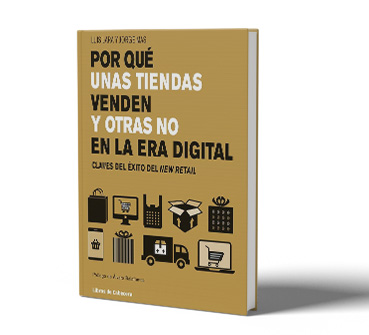
Why do some stores sell and others don't in the digital age? Keys to the success of New Retail
Authors: Luis Lara and Jorge Mas
Year: 2019
Publisher: Libros de Cabecera
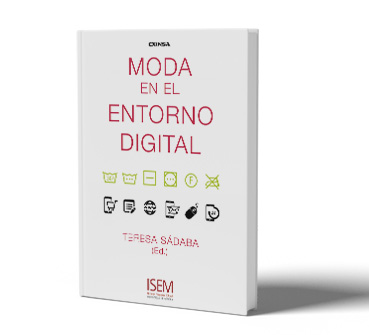
Fashion in the digital environment
Authors: Teresa Sádaba (Ed.)
Year: 2014
Publisher: ISEM-EUNSA
[+ INFO]
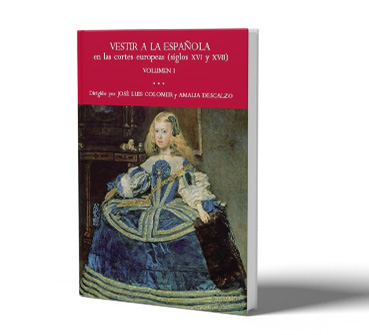
Spanish Dress in the European Courts (16th and 17th centuries)
Authors: José Luis Colomer and Amalia Descalzo
Year: 2014
Publisher: Centro de Estudios Europa Hispánica (CEEH)
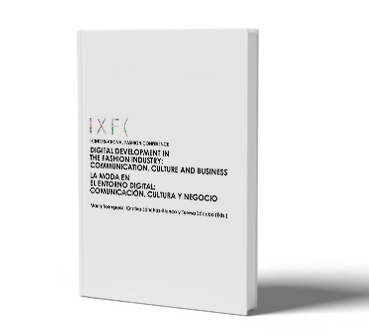
Digital Development in the Fashion Industry:Communication, Culture and Business.
Authors: Marta Torregrosa, Cristina Sánchez-Blanco, Teresa Sádaba
Year: 2014
Publisher: IX International Fashion Congress
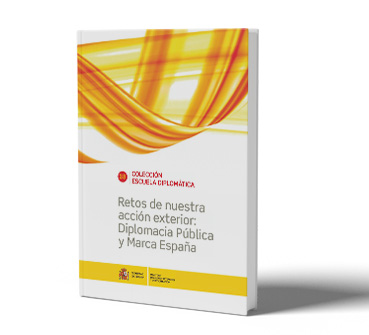
Challenges of our foreign action: Public Diplomacy and Brand Spain. Chapter: Fashion and Brand Spain
Authors: Teresa Sádaba and Luis Lara
Year: 2012
Publisher: Colección Escuela Diplomática
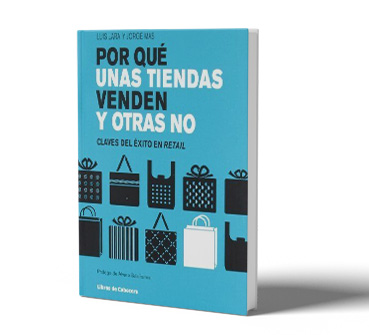
Why some stores sell and others don't. Keys to retail success.
Authors: Luis Lara and Jorge Mas
Year: 2012
Publisher: Libros de Cabecera
[+INFO]
Authors: Pedro Mir-Bernal, Simone Guercini and Catherine Prentice
Year: 2018
This paper introduces a special issue devoted to the emergence of new marketing models and tools within a fashion e-commerce context. Despite the importance of physical stores, in recent years, we have witnessed substantial development regarding the electronic trade in fashion products. In effect, fashion products represent a major category within e-commerce and have witnessed the development of a "new" form of online marketing. Special attention should be paid to the internationalization of e-commerce within the fashion industry. New models and tools have emerged in relation to: the technology/ consumption interface and the strategies of the different players within the business sector; the integration of online and offline fashion marketing; the impact of new IT technologies and new marketing on preexisting fashion marketing policies, such as customization; and the role of new emerging players such as fashion bloggers and influencers. In this period of change, new and traditional marketing tools co-exist. The five articles in this special issue seek to contribute to research whose aim is to systemize new models and tools that may be useful for practitioners and marketing researchers working in this field.
Quality of Service in Retail
Authors: Pedro Mir-Bernal, Jacqueline Vidal
Year: 2017
A happy couple is having their wedding at a beach resort on an island near the coast of Venezuela. After the wedding party, the customers take their things from their rooms and ask for the key to the honeymoon suite they have reserved. The receptionist tells them that they have no reservation for the room and that it is not available. The groom asks for a different suite at the resort's expense since someone failed to make their reservation correctly. How should the resort management handle the issue?
Authors: Pedro Mir-Bernal, María Gracía Accini Moran
Year: 2017
Rosa, a wealthy young woman, planned an elaborate celebration for her twenty-first birthday. She planned a weekend of activities for her friends in Barcelona, rented a beautiful house next to the beach, booked an expensive restaurant dinner, and for the end of the night made a reservation and paid a deposit for a private party at the most upscale bar in Barcelona. Everything went smoothly until a bouncer at the bar ruined her night.
Authors: Pedro Mir-Bernal, Rouxelle de Villiers, Po-Ju Chen, Linda Coleman, Tung-Cheng (TC) Huan, Arch G. Woodside
Year: 2017
This special issue includes 27 customer experience (CX) trade tales as told in the words of real shoppers and customers. Some tales are of dilemmas and cognitive dissonance, whilst others share their elation at receiving the value, satisfaction, and respect they felt they deserved. When reading these accounts, you are likely to agree that there is much more to consumers' everyday buying decisions and experiences than what meets the eye of the customer care officer, the representative or business owner (collectively called marketers here) at first glance. The emotive language and illustrative narratives emphasize the affective, intellectual, emotional, and social impact of good and bad responses by organizations to interactions with customers. You will quickly notice how positivelyinclined customers can turn from highly impressed, excited and actively engaged customers, to negatively valanced antagonists, defending their point of view, or (in sharp contrast) respond to a sales interaction with passive aggressive behavior. Surface to deep assessment follow each trade tale. Many of the tales are useful materials for creating emotional and insightful learning dramas for improving empathy and communication skills of those among us who interact with customers.
Authors: Pedro Mir-Bernal, Teresa Sádaba, Simone Guercini.
Year: 2017
The aim of this paper is to analyze the role that e-commerce has to play in the internationalization of Spanish luxury multi-brand stores. Possible answers are sought to the following research question: How might the adoption of e-commerce platforms affect the international sales of multi-brand retailers? This paper presents a data analysis of the 15 most important Spanish fashion multi-brand retailers and the different prospects of e-commerce today. Our analysis of online stores shows an open mentality when it comes to adapting to this new business model, but the late integration and inexperience of the majority of retailers limit their performance. Information from different channels and further research through the collaboration of brands would have given us more detailed information regarding the current situation within this sector. The paper analyzes the current situation of e-commerce luxury fashion multi-brand stores and mainly focuses on the Spanish market, even though it also offers a global overview.
Authors: Patricia SanMiguel, Teresa Sádaba, Sandra Bravo.
Year: 2017
This article analyzes the role of personal communication and opinion leaders in the diffusion of fashion trends; where the increase of clothing collections made by brands, the democratization of fashion and the growing role of the 'street' in dictating trends pose to better understand such diffusion processes. An analysis is made of the various scientific contributions in the field of diffusion of innovations and research on opinion leadership and personal influence. The analysis identifies the rise of personal communication and opinion leaders, the diffusion processes of fashion trends - ranging from cross-class imitation to viral propagation - and opinion leadership and personal influence in fashion. This paper highlights the fundamental role that opinion leaders play, through personal communication, in the adoption or rejection of a fashion trend by consumers.
Authors: Marco Pedroni, Patricia SanMiguel, Teresa Sádaba.
Year: 2017
Is the golden era of fashion blogging over? In more than a decade after their first appearance fashion blogs have established themselves as a constant element on the fashion scene, but in many aspects, they have not yet found a definitive position in the field of fashion media, at least in terms of legitimization. Blogs have been often celebrated as instruments for the democratization of fashion, able at the same time to reduce the distance between "the establishment" and ordinary fashion lovers and to push young and unknown outsiders toward the center of the fashion system; on the other side they have been opposed - at least at the beginning - both by fashion journalists and companies, the former looking at blogging as an unprofessional practice that threatens to destroy the quality of the fashion-related tales, the latter displaced in front of the new 'fashionable' practice of inviting bloggers to catwalks and using them as testimonials.
The arguments made in this chapter are based on quantitative and qualitative research carried out in Italy and Spain. Through a desk analysis of the twenty most popular blogs (ten for each country), according to the ranking provided by Le Guide Noir, we investigated the features of the bloggers with the highest level of visibility and their activity on the social media, as some recent studies points out (Sádaba and SanMiguel, 2016). It must be remembered that, even if we label them as bloggers, they manage a structured communication strategy whose blogs are just a piece together with Facebook, Twitter, Instagram, Pinterest accounts, and so forth. We also recruited a snowball sample of 62 bloggers who were interviewed with qualitative techniques. The Italian sample includes 42 interviewees (11 male, 31 female); testimonies are based on a non-directive method ("life- story approach", see Bertaux 1981) and have been collected between 2011 and 2015. The Spanish branch of the study relies on semi-structured interviews to 20 bloggers (3 male, 17 female) collected between 2014 and 2015 .
Authors: Frances Pujol, Teresa Sádaba, Patricia SanMiguel
Year: 2016
The study Digital Impact of Fashion and Luxury Brands 2016 is a comparative analysis of 120 fashion brands and their behavior in the online world that allows:
Analyze the behavior of 120 fashion brands: strengths and weaknesses in their digital strategies.
Establish a comparative analysis of each brand with respect to its competitors.
Identify fashion trends that are created and disseminated from social networks thanks to the analysis of published content.
To know the positioning of Spanish brands in a digital environment without borders.
Knowing the positioning of international firms in the Spanish market.
To learn about the best practices of digital behavior.
To help in decision making on digital marketing strategies.
Authors: Teresa Sádaba, Patricia SanMiguel.
Year: 2016
Little but increasing research has been done about the influence of blogs in the consumer decision- making process. This paper tries to shed some light on this new scenario, analyzing how bloggers are now a key player in the fashion industry, and explaining how they create a closer and more qualified relationship with customers, so they can be more influential. Based on a case study, and considering different approaches to bloggers influence, this article makes it clear that measuring the engagement between bloggers and readers is significant for brands and their marketing strategies with bloggers.
Authors: Teresa Sádaba, Patricia SanMiguel.
Year: 2016
Since Paul Lazarsfeld's study on the influentials, carried out in the forties, research on opinion leaders have been developed mainly in the political field. Nevertheless, in his studies, Lazarsfeld focused his attention on other areas such as fashion.Lazarsfeld identified influentials as those people with a "leadership almost invisible and certainly unconscious, face to face; close, informal and daily", being able to influence in their relatives' voting and purchasing decisions. These opinion leaders' or influentials' prescribing ability was and is today very powerful and of great interest for its study.Clearly, the influence of the Internet in society has changed the way we communicate, interact and consume. In the fashion area, a research study about the influentials after the advent of the Internet has not been done yet. As a consequence, the main goal of this research is to fulfill this de cadency by providing data of the in influentials in fashion, in the Spanish case.
Authors: Teresa Sádaba, Patricia SanMiguel.
Year: 2016
On 24 April 2013 at 9 o'clock in the morning local time, the Rana Plaza building in Dhaka collapsed. This factory produced clothing for 29 different fashion brands. The final casualty figures came to 1,129 dead and 2,515 injured. The Rana Plaza case is the worst accident in the history of fashion manufacturing. The management of the crisis on the part of the individual brands was extremely diverse and led them towards different communications scenarios. However, another crisis emerged at that moment: the industry itself and its manufacturing methods were effectively called into question. In fact, this issue has continued to be controversial and has led to an interesting public debate.
Through the case analyzed here, this paper seeks to meet three objectives: a) stress the importance of communication with regard to the management of the crisis; b) highlight the link between crisis communication and corporate social responsibility; c) focus attention on the fashion industry, where intangible values acquire considerable importance and, therefore, are especially affected by crises.
The events at Rana Plaza raise different questions that pose a challenge regarding crisis communication, given that we are dealing with an industry-wide crisis featuring multiple voices and multiple reactions.
Authors: Pablo Foncillas, Patricia SanMiguel.
Year: 2015
This chapter will address the keys of the 6 steps to take into account to develop a good e-commerce, therefore it is not intended to make an exhaustive analysis, but to provide some guidelines to evaluate and develop the appropriate strategic changes in your company.
If e-commerce were a piece of music, we must realize that it is totally new and that we must learn to dance to it in a different way. This requires understanding at least six parts that are the keys to taking advantage of the benefits offered by this new way of doing business. Continuing with the musical simile these parts would be: The stage on which we dance (the context), the audience (the customers), the types of dance (ecommerce typologies), the dance technique (the essential steps of ecom), the disc jockey (board of directors) and the coach (steering committee). In other words, human profile dimensions and technical dimensions (but none in the technological field, since technology is the last thing we should think about when developing e-commerce).
Authors: Teresa Sádaba, Patricia SanMiguel.
Year: 2015
To speak of communication and fashion is to speak of influence. With communication, the mechanisms of imitation and influence are activated, which favor this phenomenon we call fashion. Imitation, as an effort to resemble others, and influence, as the capacity to prescribe, are the fundamental axes of public opinion. And both, imitation and influence, are also the foundations of fashion. Behind the success of Converse sneakers, Bomber jackets or the fashionability of beards or mustaches, there is a whole history of imitation and prescription. For fashion, the advantage today is that in our new technological environment, it is not only the media who have the ability to create a climate of opinion, but individuals who, from their tablets or phones, are able to generate social climates through their networks of influence.
Authors: Patricia SanMiguel, Teresa Sádaba, Marco Pedroni.
Year: 2016
After ignoring the rise of fashion bloggers as new actors in the fashion scene, over the last few years a number of contributions have explored this topic (Rocamora, 2011, 2012, 2013; see also Berry 2012; Chittendon 2010; Connell 2013; Kretz 2010; Lewis 2013; Rocamora and Bartlett 2009; Pedroni, 2014; Sádaba and SanMiguel, 2014; Mora and Rocamora, 2015; Findlay, 2015). These works analyze the role of fashion blogs, their legitimation in the field of fashion media and their influence on the consumer decision-making process. Also, in previous works of the same research team, the evolution and categorization of the fashion bloggers has been analyzed to conclude that blogs have gained a more institutionalized and normalized role in the field of fashion. Despite the presence of many aspirational bloggers, the field has left its "innocent stage" and become highly professionalized and institutionalized, but there are significant differences by countries. In this paper, we aim at going further with the analysis of the field of fashion blogging and its evolution. It is discussed how the process of professionalization is taking place, by considering bloggers' relationship with brands, the transformations of blogs towards a business model, together with bloggers' view of the future. Differences among countries are also analysed. The methodological approach is twofold: a comparative analysis between Spain and Italy is carried out through a both quantitative and qualitative analysis. The results of a survey (220 participants, 110 in each country) and 88 qualitative interviews to both Spanish and Italian fashion bloggers are discussed. Findings will contribute to understand the process of professionalization of fashion bloggers and to conclude that the "golden era" of fashion blogging (a mythical period of prosperity and abundance) is over, even if the scenario varies by country. After the emergence of fashion bloggers, a more institutionalized social field has emerged and it works as a part of the contemporary fashion system.
Authors: Patricia SanMiguel, Teresa Sádaba, Marco Pedroni.
Year: 2016
The impact of the Internet on society has clearly changed the way we communicate, interact and consume. In the communication and marketing area institutional agents like companies try to find the best way to reach their consumers in the online scenario, but outsiders (such as fashion bloggers) are often able to achieve significant results by using Web 2.0-based tools and innovating the language of fashion communication.
Since the 1990s several studies have shown that marketing based on opinion leaders (Influentials/influencers) is one of the most successful strategies (Mowen, 1990; Weimann, 1994; Keller & Berry, 2003). What are the personal characteristics of these leaders in fashion? Are fashion bloggers the new influencers? How do they interact with readers and brands? How do these leaders work in the Mediterranean Europe?
This paper explores these issues through a comparison between the Italian and Spanish fields of fashion blogging, where the rise of these new opinion leaders has begun later than in the Anglo-Saxon world, presenting the first Fashion Influentials comparative study between two countries. The study is made of two sections: first, an opinion leadership questionnaire (sample: 200 bloggers, 100 for each country); second, a desk analysis of the twenty most popular blogs (ten for each country) with the highest level of visibility and their activity on the social media.
Findings show the profile of influential fashion blogger (personal characteristics, knowledge criteria and social factors) and the way they interact with their community and fashion companies. From an interpretative point of view the paper (second in a series of comparative studies realized by the authors) aims at discussing fashion blogging as a social field able to change the way the whole system of fashion communication works.
Authors: Teresa Sádaba and Patricia SanMiguel
Year: 2014
Research on opinion leadership has traditionally been dealt with by political communication, ever since Paul Lazarsfeld inaugurated the study of influencers. However, Lazarsfeld also investigated influence in the area of fashion. The prescriptive power of these influencers is a very relevant issue for fashion brands and is the focus of this study. It is also the first study carried out on fashion influence, taking into account the advances made possible in this area by the emergence of the Internet.
Authors: María Eugenia Josa Martínez and Carlos Naya
Year: 2016
In the mid-1950s, a trend of modernization of forms took place in Spain that made it possible to update the country's image. This renovation was promoted by the Spanish official authorities who took a stand in favor of a new design and a new architecture that would be able to compete with foreign creations. In the midst of the debate on the integration of the plastic arts and architecture, this modernization advocated collaboration between architects, artists and even companies, who would work as a team to transform both the keys to design objects and works of Spanish architecture, as well as the commercial and image strategies of the companies.
The future communication will analyze Carvajal's work for Loewe as an example of brand image creation and commercial design, approaching the Serrano store project through its architecture. The aim is, on the one hand, to highlight the role of Javier Carvajal's work in this business field, and on the other, to reflect on this issue in order to provide new ideas applicable to other cases today. To this end, bibliographical sources of the time will be consulted - the Spanish architecture magazines Nueva forma, Arquitectura y Hogar and arquitectura - as well as the specific bibliography of the field of research - doctoral theses, exhibition catalogs, monographs and articles.
Authors: María Eugenia Josa Martínez and María Villanueva Fernández
Year: 2014
The essence of fashion is the constant renewal of its forms, but at times, the relevance of tradition in the fashion industry can be forgotten. However, the past is unavoidable, and in many cases tradition has become the fundamental element of the modernization of the brand and even the key to its success. In order to show the importance of tradition in terms of modernity, the following paper will address the case study of Loewe as an example of this phenomenon. Loewe launched a project to modernize the brand to project a corporate identity related to the prestige, exclusivity and uniqueness and materialized through craft production methods and carefully designed. For this project the firm counted on the architect Javier Carvajal and the artist Vicente Vela, who designed a new look for the stores, the brand and the product, providing a renewed vision of Loewe. This turn toward modernity was based on the analysis and the application of the qualities of the Spanish tradition and craft, from that moment will become part of the identity of the firm.
By the end of 2013 Jonathan Anderson arrived at Loewe, as the new Creative Director, he gave a fresh take on the brand based on its history, by returning it to its origins. Jonathan is inspired by the most brilliant period of Loewe, which he considers the 50's, 60's and 70's. This new project is promoting a new change, reinventing a legacy of 168 years of craftsmanship and innovation.
Authors: María Eugenia Josa Martínez and María Villanueva Fernández
Year: 2014
The constant renewal of its image is part of the very essence of fashion. This is not possible without keeping in mind the previous state, the past or, in other words, tradition. So, in many cases, this tradition has become the fundamental element for the modernization of the brand's identity and even the key to its success. In order to show how tradition influences the evolution of brand image, the future communication aims to study the case of Loewe as an example of this phenomenon. This paper addresses this issue through the analysis of the evolution of Loewe's image, relating the period since 1956 -when the process of renewal of the firm towards modernity began with the help of Javier Carvajal and Vicente Vela, among others- and the current moment -when the firm is committed to the recovery of that brilliant period with Jonathan Anderson as creative director. This research reveals the importance of tradition in the evolution of the brand's image, analyzing the three levels of design through which the renewal of Loewe took place: its stores, its logo and its products. In this way, this work will shed light on the value of tradition in the image of fashion businesses, in order to provide new ideas applicable to other current cases.
Authors: María Eugenia Josa and Diego Vega
Year: 2016
Photography, in the fifties, reached the greatest importance in the diffusion of the image to the whole world. It will be in charge of bringing the image where the static architecture does not reach to remain in the memory of those who have never been there. Photography will gain importance linked to the magazine, in which it will multiply to be seen and seen again. Carvajal, in his eagerness to project a new image for Loewe, knew that it was essential to rely on photography and the media of the time to advertise his stores. Thus, the choice of the architect when choosing the media in which the projects were to be published, was an important qualitative leap for the firm.
This paper will address the importance of photography as part of the renewal of Loewe's image. The relevance of the work of Francesc Catalá Roca and Elías Dolcet will be shown through the analysis of their photographs and their diffusion. In this way, this study will shed light on the value of the tradition of the image of fashion business, in order to provide new ideas applicable to other current cases.
Authors: María Eugenia Josa Martínez and María Villanueva Fernández
Year: 2016
The paper addresses Loewe's image renewal based on the modernization of tradition as a luxury strategy, through the analysis of one commercial space designed by Carvajal: the Loewe Serrano Street store. Carvajal fused traditional craftsmanship with new modern forms referencing the work of architects and designers from northern Europe. This research shows the Nordic influences in this project through the study of three technical aspects: form-space, materials and design.
These issues have been analyzed by comparing the work of Carvajal with the work of architects and designers such as Alvar Aalto Nordic, Arne Jacobsen, Hans Wegner or Gunnar Asplund. Numerous similarities have been found such as curved spaces, the use of wood, similar forms applied to different designs... These common parameters show the real influence between Nordic architecture and Loewe spaces.
In addition, the consultation of the personal archive of the architect Javier Carvajal, as well as, the bibliographical sources of that moment -Spanish magazines Nueva forma, Arquitectura and Hogar y arquitectura- and other specific references of the research field -exhibition catalogs and monographies- is conducted. By doing so, this paper demonstrates how merging tradition with modern forms provided an image of exclusivity, luxury and innovation to Loewe, something the brand is recovering today.
Authors: Amalia Descalzo Lorenzo
Year: 2014
All the creations we call "dresses" have been materialized with textiles or materials suitable for adapting to the natural shapes of the human body. Tailors, couturiers, designers and fashion designers have been aware of the importance of the materials they worked with to execute their ideas. Our study underlines the importance that the great couturier Balenciaga gave to fabrics, natural or artificial, to the point of saying that "the fabric is in charge". Through this work we analyze the most innovative silhouettes of the couturier's work as well as the materials he chose for their realization. The study has focused mainly on the decade of the fifties and sixties until his retirement from the fashion world, because it was in these years that Balenciaga created the most innovative lines of his entire career while laying the foundations of what would be the dress and fashion after him.
Authors: Verónica Arribas and Isabel García
Year: 2014
The purpose of this article is to analyze some ethical aspects specifically related to the fashion industry. To this end, the strategy and management style of a leading company in the "youth clothing" market will be analyzed: Abercrombie & Fitch (A&F). This company has been chosen as a case study because of the numerous and controversial reactions that its brand policy has provoked in recent years. The structure to be followed consists of two parts. Firstly, a bibliographical review of the concept of business ethics will be carried out, trying to identify those contributions that are relevant to the fashion industry. Secondly, the case of the A&F company will be analyzed as an empirical support for the ideas presented in the first part. Finally, a series of questions are posed that leave open a possible debate on the basis of the above.
Authors: María Eugenia Josa and María Villanueva
Year: 2014
In 1872, the German craftsman Enrique Loewe Roessberg arrived in Madrid, attracted by the expansion process that Spain was undergoing at that time. At the same time that his business in the leather sector was evolving, Enrique Loewe was occupying different premises that he would use as workshops, exhibition areas and commercial premises1. From the beginning, architecture became one of the main tools to promote the company and to approach a distinguished clientele, among which the kings Don Alfonso de Borbón and Doña Victoria Eugenia would be found from 1905 onwards.2 The exquisite social sector to which the firm was directed forced a constant improvement of its commercial spaces. In 1939 Loewe inaugurated the emblematic store located in the central Gran Vía nº 8. This commercial space was designed by the architect Francisco Ferrer Bartolomé3, who a year later would also be in charge of the project of the store located in Paseo de Gracia in Barcelona4. In addition, those spaces were in keeping with the high quality of the product offered by the firm, made with the best materials, an aspect that had brought it fame since its inception5. It was a type of design rooted in a classicism that was not altered by the new trends of the time. However, from 1956 onwards, the formal direction of the company took a significant turn, changing its course towards modernity. In this task, the company's collaboration with other professionals, such as the architect Javier Carvajal and the artist Vicente Vela, who designed a Spanish commercial image project for Loewe, took on special importance.
Authors: Teresa Sádaba and Patricia San Miguel
Year: 2014
In recent years, issues related to sustainability and ethical behavior in the fashion industry have begun to be studied from a critical point of view (Emberley, 1998; Moisander and Personen, 2002). With the emergence of the "Fast Fashion" model, the production and distribution of fashion has changed its rhythm and requires low-cost manufacturing tools that are mainly found in developing countries. In these countries, issues related to working conditions and the environment of workers in a large-scale industry raise relevant ethical questions (Aspers and Skov, 2006), and in this context, crises and their communication are decisive for the reputation of brands, and although the knowledge of crisis management has already been developed (Pearson and Clair, 1998), in the light of the actions analyzed here, the consequences that such management can have on brands can be observed. This paper will focus its analysis on the crisis experienced in Bangladesh in April 2013 and how the responses of the different fashion companies take place. In this way, it raises issues of relevance for reflection and, above all, for future actions.
Authors: Verónica Arribas, Teresa Díaz, María Eugenia Josa, Patricia Sanmiguel, Teresa Sádaba
Year: 2013
Abstract: Hoss Intropia is one of the Spain "s largest fashion brands and the first one that since its birth aims to generate the lowest possible impact in society and environment. Sustainability in the fashion industry has become a widely discussed issue. The fast fashion brands contribute to this matter. It is widely accepted th at the fashion industry needs new attitudes towards ethical and environmental practices. In this paper we will try to investigate the case study of susta inability in the brand strategy. Hoss Intropia was created in 1994, has presence in 48 countries with 1 600 points of sale. We consider that nowadays this Spa nish brand is a good example not only for new trends in branding but also in the way they are influenced by this matter within all the business activities. This case study takes us to be able to be able to offer s ome conclusions extendable to o ther brands and highlights the role of sustainability as a strategy goal.
Authors: Teresa Sádaba and Patricia Sanmiguel
Year: 2013
Since Paul Lazarsfeld's pioneering study of influentials in the 1940s, research into opinion leaders has focused primarily on the field of politics. However, Lazarsfeld himself addressed a number of other areas, including fashion. Lazarsfeld defined influentials as people who exercise an "almost invisible, certainly inconspicuous form of leadership, at the person-to-person level of ordinary, intimate, informal, everyday contact", and who are able to influence the voting and purchasing decisions taken by their relatives, friends and acquaintances. The prescriptive power of such opinion leaders or influentials remains prevalent nowadays, and is of acute relevance to the overall purpose of this paper. The impact of the Internet on society has clearly changed the way we communicate, interact and consume. No research into the role of influentials in the fashion sector since the advent of the Internet has yet been carried out. Thus, the primary objective of the study presented here is to meet this research need by drawing on data relating to influentials in the Spanish fashion sector.


